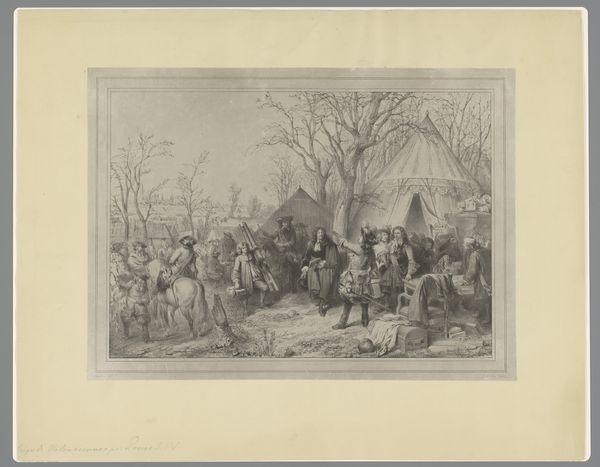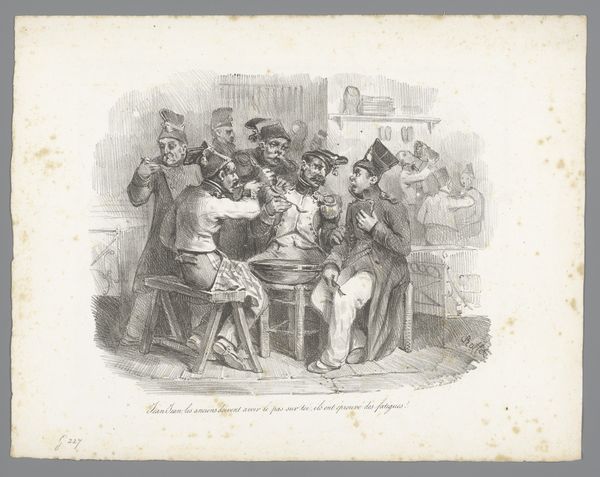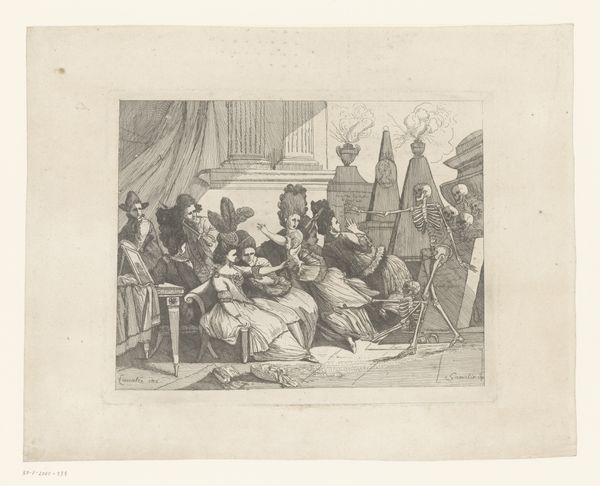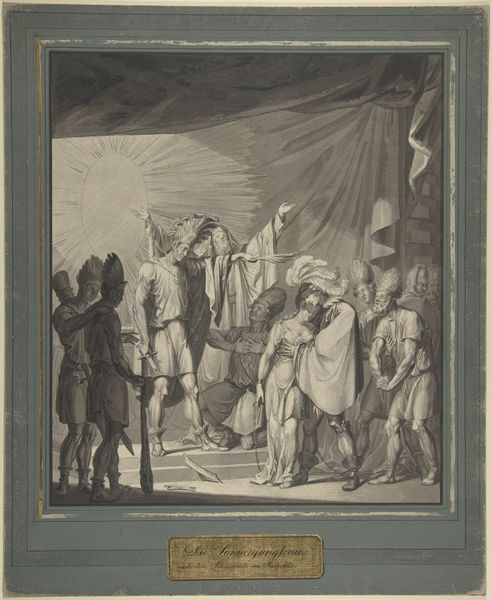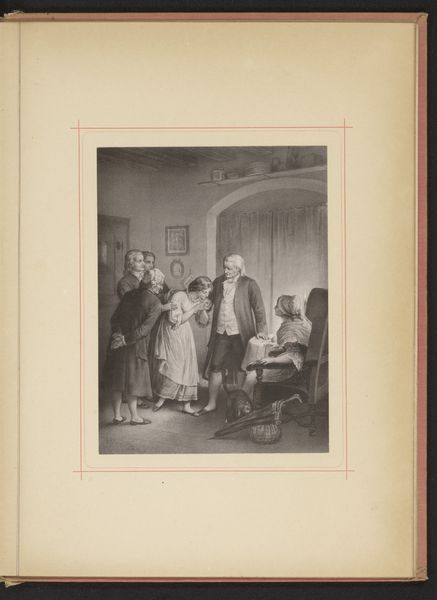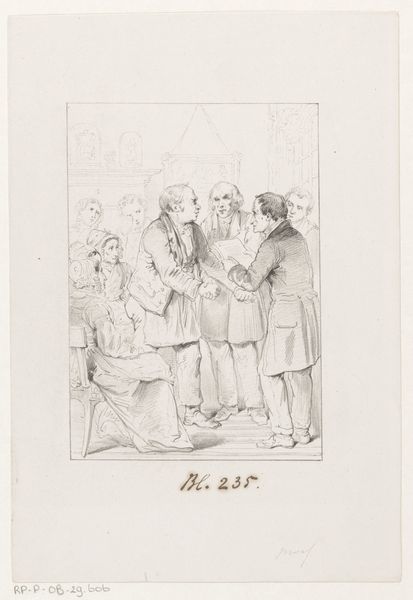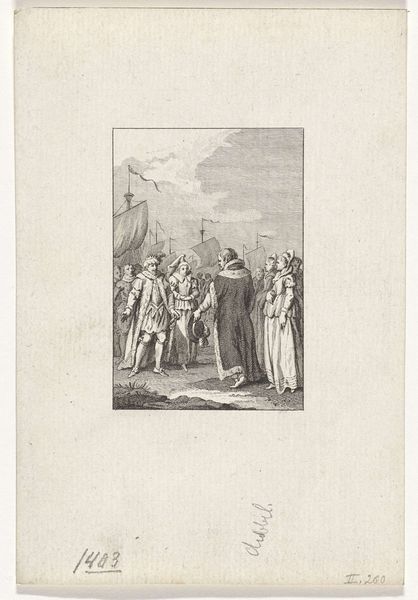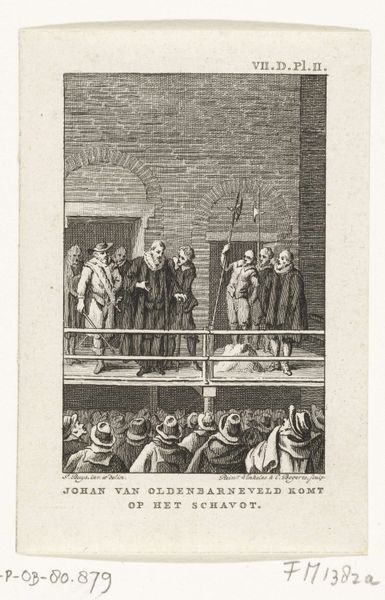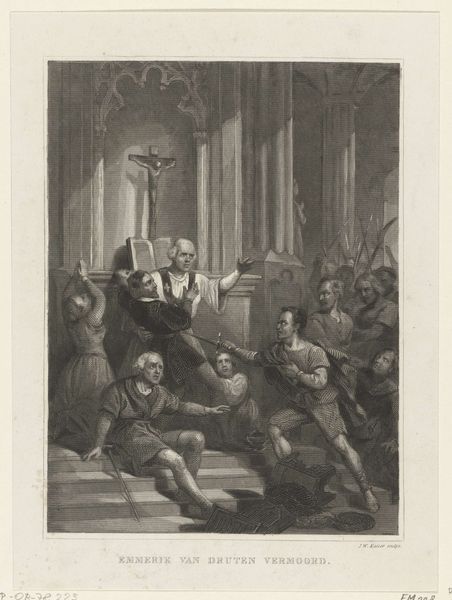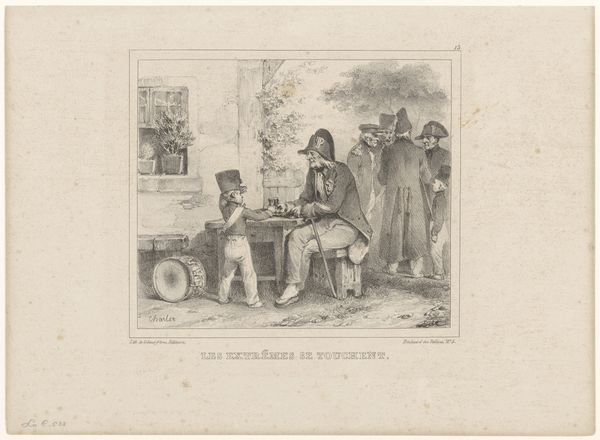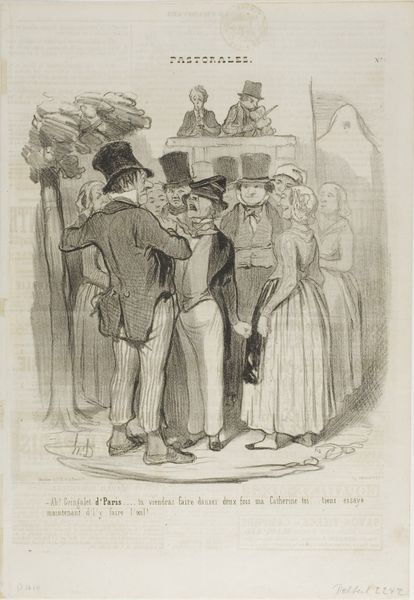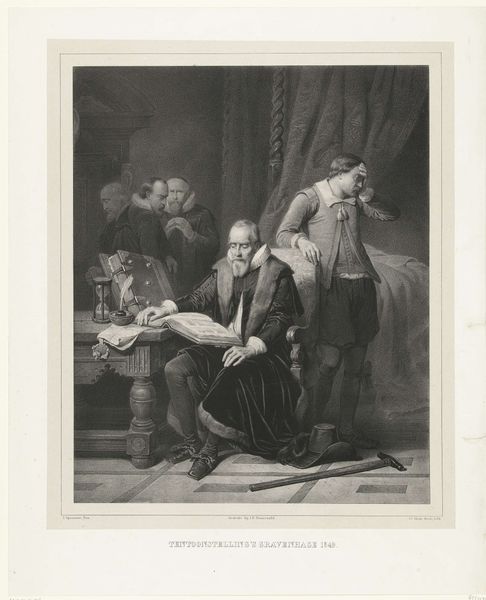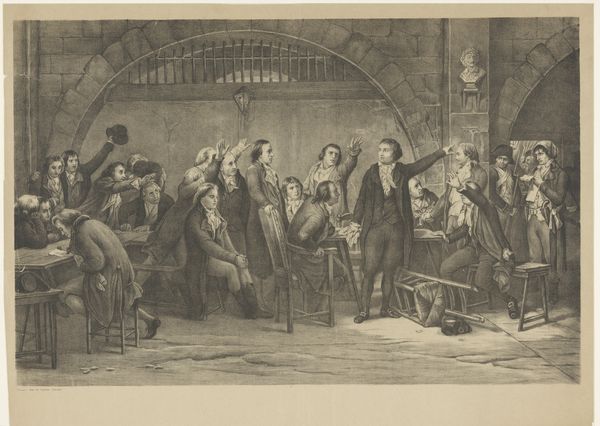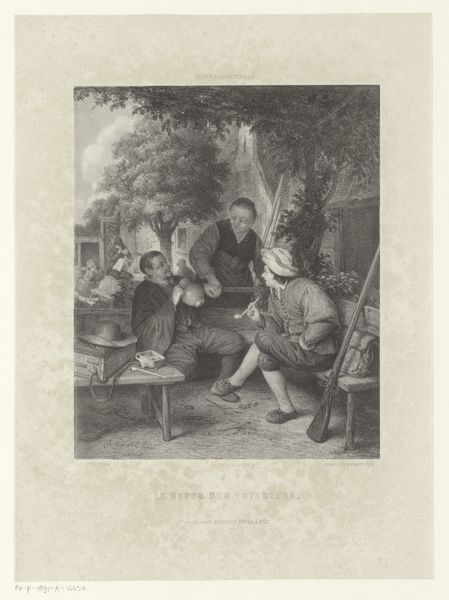
Fotoreproductie van een schilderij van mensen naast een koets met een bruidspaar door Konrad Beckmann 1856 - 1900
0:00
0:00
print, photography
#
portrait
# print
#
photography
#
historical photography
#
19th century
#
genre-painting
#
history-painting
#
realism
Dimensions: height 132 mm, width 94 mm
Copyright: Rijks Museum: Open Domain
Curator: Here we have a photogravure created between 1856 and 1900, “Fotoreproductie van een schilderij van mensen naast een koets met een bruidspaar door Konrad Beckmann," or a photographic reproduction of a painting of people next to a carriage with a bridal couple, by Konrad Beckmann. Editor: My first thought is that it's interesting how photographic techniques are being used to translate other mediums—what sort of value judgments are involved in reproducing a painting as a photograph? Curator: Exactly! The materials themselves – the paper, the ink, the photographic process – become integral to understanding this work. A photogravure allowed for mass production, expanding access to images that might otherwise be limited to an elite audience. Who had access to paintings, and how did reproductive technologies change the scale and economy of imagery? Editor: It really brings forward how notions of ‘originality’ become quite slippery, doesn’t it? Thinking about who benefits from these images being distributed. Are we considering, for instance, whether this photograph reinforced class structures? Or disseminated certain ideas of gender roles through the depiction of this bridal scene? Curator: We also see the hand of the artist subtly intervening throughout the photogravure process itself, in manipulating light and shadow and potentially in retouching the photograph of the painting. The act of translation through technique always reshapes the material and meaning. Editor: Yes! Look at the gaze of the people to the side of the carriage; what does it mean for those gazes to be captured in a permanent way and mass distributed to the bourgeoisie? The whole scene romanticizes this notion of marriage, of this patriarchal union being at the center of social life. It’s ripe for critique, as a statement about social values. Curator: Right. The reproduction highlights the construction, and the labor behind the image creation. Someone had to make the paper, someone mixed the ink, someone took the photo and someone managed the distribution network to share these. The material conditions themselves have an implicit politics and a history worth understanding. Editor: Precisely. It’s about pulling at the threads to reveal the societal systems being presented. Thanks for pointing out that we need to question this, instead of just passively viewing. Curator: A worthwhile discussion to be had!
Comments
No comments
Be the first to comment and join the conversation on the ultimate creative platform.
